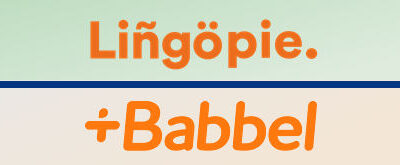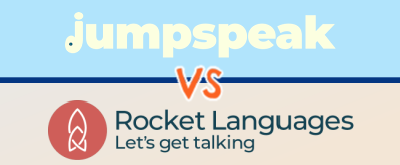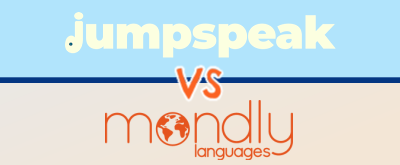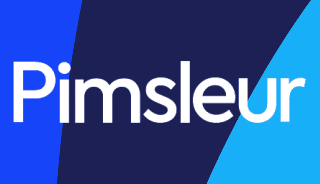
Free 7-Day Trial
Sign Up Today
|
$20/mo |
Comprehensive language learning app that emphasizes audio-based lessons, guiding learners through interactive conversations and reinforcing skills with spaced repetition to improve speaking and listening abilities. |
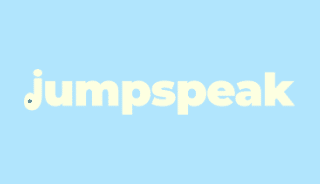
Learn Today
Free Trial
|
$8-$13/mo |
Unique language learning app that utilizes AI to guide users through interactive speaking scenarios giving them instant feedback on their pronunciation and sentence structure. |
Choosing the right language learning app can make all the difference in building fluency, and both Jumpspeak and Pimsleur take unique approaches to the process. While Jumpspeak focuses on AI-driven conversation practice for real-time speaking skills, Pimsleur uses an audio-based method rooted in spaced repetition—so which one is the better fit for your learning style?
Editor’s Choice

Pimsleur
- 50+ Languages
- Money Back Guarantee
Pros
- Detailed, interactive audio lessons that feature fluent speakers
- Helpful mix of practice drills following audio lessons
- Accurate speech recognition software
- Ability to complete lessons while you’re driving
- Modern, intuitive digital platform and mobile app
Cons
- Slightly more expensive than Jumpspeak
- Limited inclusion of images/graphics within lessons
Video Review: Pimsleur vs Jumpspeak
In the video below, Bianca from the Guide2Fluency team compares the language learning apps from Pimsleur and Jumpspeak.
Reasons To Choose Pimsleur
To kick this comparison off, let’s discuss the major reasons to choose Pimsleur to help you learn a new language as opposed to Jumpspeak.
What The Pimsleur Program Is All About
Compared to Jumpspeak, Pimsleur takes a more traditional and structured route to language learning. Each lesson kicks off with a 30-minute audio session, which acts as the core of the program—somewhat similar to Rocket Languages.
During these audio lessons, an English-speaking instructor walks you through a conversation step by step. You’ll listen to sentences in your target language, get brief explanations, and then be prompted to respond or repeat key phrases. After finishing the main audio session, you’ll dive into reinforcement activities like reading exercises, interactive flashcards, quizzes, pronunciation drills, and speed games—kind of like a class followed by homework to lock in what you’ve learned.
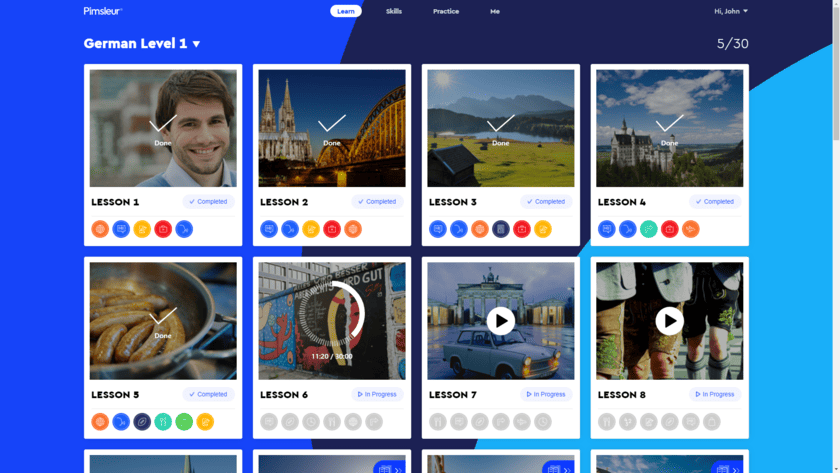
Beyond the structured lessons, Pimsleur also offers a few handy extras. You’ll find vocabulary booster packs and a Voice Coach feature, which helps fine-tune your pronunciation.
All in all, Pimsleur blends immersive audio lessons with targeted practice tools, making it a solid option for learners who prefer a step-by-step approach.
Interactive Audio Lessons
One of Pimsleur’s standout features is its audio lessons, which serve as the foundation of the program and really set it apart from competitors like Jumpspeak. Unlike quick, AI-driven conversations, Pimsleur’s long-form audio sessions provide an immersive experience that helps you absorb the language naturally.
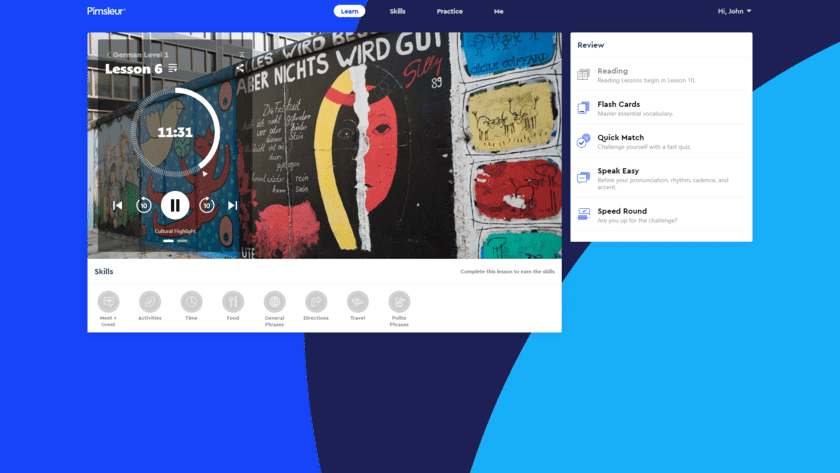
Consistently hearing a language spoken in real-world scenarios is key to mastering it, and Pimsleur nails this with its structured yet engaging approach. While Jumpspeak’s bite-sized lessons are fun and interactive, they don’t quite match the depth of Pimsleur’s full-length conversations, which are designed to train your ear and improve comprehension over time.
Beyond just listening, Pimsleur pushes you to think on your feet and respond out loud, mimicking real conversations. This active recall method not only reinforces what you’ve learned but also builds confidence in speaking—a crucial skill for language learners.
Lesson Format
Pimsleur lessons take a bit more time to complete than Jumpspeak’s—around 45 minutes versus just 10—but the extra time comes with a big advantage: flexibility.
Unlike Jumpspeak, which keeps you glued to your screen tapping through responses, Pimsleur’s audio lessons let you learn on the go. You can press play and absorb a new language while jogging, cooking, or even doing chores—turning downtime into productive study time.
A huge plus is that you can even listen while driving, thanks to Pimsleur’s hands-free driving mode, making it a safe and convenient option. The app also saves your progress automatically, so you can pause whenever needed without losing your spot—unlike Jumpspeak, which often requires you to restart a lesson if you exit mid-way.
With its flexible, user-friendly design, Pimsleur makes it easy for busy learners to fit language study into their daily routine.
Accurate Speech Software
One big win for Pimsleur is its speech recognition technology, which we found to be faster and more accurate than Jumpspeak’s. The response time is noticeably smoother, making for a more natural learning experience. With Jumpspeak, there’s often an annoying lag before and after you speak, which can throw off the rhythm of a lesson. Plus, its accuracy can be hit-or-miss—during testing, we purposely mispronounced “gusta” as “dusta,” and it still counted it as correct.
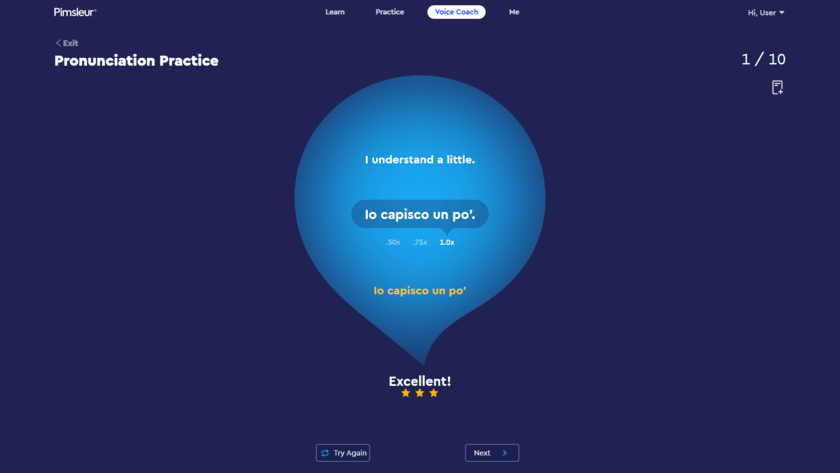
Pimsleur, on the other hand, does a much better job at catching pronunciation mistakes and providing real-time feedback. It consistently recognizes subtle differences in speech, ensuring that learners build proper pronunciation habits—similar to what you’d get with Rosetta Stone. This level of accuracy makes Pimsleur a more reliable option for developing strong speaking skills.
Digital Platform
Overall, Pimsleur offers a smoother and more reliable user experience. Its digital platform and mobile app are fast, easy to navigate, and free from frustrating hiccups, making it simple to jump into a lesson without any hassle.
Jumpspeak, while modern and visually appealing, isn’t quite as polished in terms of performance. We’ve run into occasional glitches—like dialogue boxes freezing mid-lesson—which can be disruptive. And we’re not alone; similar complaints pop up across forums and reviews. While these issues aren’t constant, they do make Pimsleur the more dependable choice for a frustration-free learning experience.
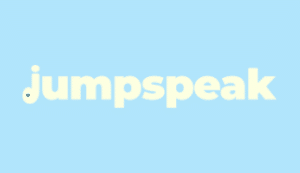
Jumpspeak
- 20 Languages
- Money Back Guarantee
Pros
- Slightly more affordable than Pimsleur
- Short lesson format (few minutes per section)
- Intro videos prior to each lessons are helpful
- AI tutor tool provides users real-time feedback
- Adjust audio speed to boost understanding
Cons
- App contains glitches in our experience
- Speech software is just average
- Standard lessons are somewhat basic
Reasons To Choose Jumpspeak
Now that we’ve covered Pimsleur, it’s only fair we talk about the strengths of the Jumpspeak program as well.
What The Jumpspeak App Is All About
In a nutshell, Jumpspeak uses AI to immerse you in your target language through two main methods. The first is its bite-sized lessons, which are broken into four quick sections, each taking just a couple of minutes:
LISTEN: You hear an audio clip and pick the correct answer from multiple-choice options.
WRITE: This mimics a text conversation, where you type out responses like you’re messaging a friend.
SPEAK: You listen to a word or phrase and repeat it out loud to practice pronunciation.
CONVERSATION: Similar to the Write section, but instead of typing, you respond verbally.
These lessons are pretty standard and don’t offer anything particularly new compared to other language apps. What really sets Jumpspeak apart, though, is its AI tutor. This feature allows you to engage in free-flowing conversations on everyday topics like shopping, health, and dating.
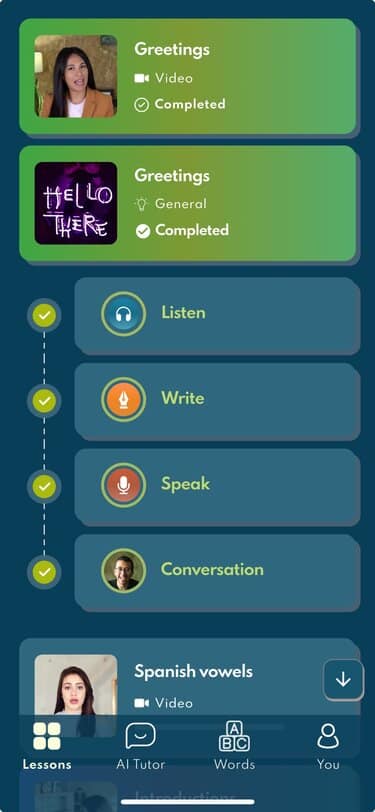
Unlike traditional exercises, the AI tutor lets you respond however you’d like and adapts its replies accordingly while providing feedback to help refine your speaking skills. This interactive, real-world approach makes Jumpspeak stand out.
We’ll take a closer look at the AI tutor later, but for now, these are the basics of how Jumpspeak works.
Quick Lesson Format
Some learners might prefer Jumpspeak’s shorter, more compact lessons. A full Pimsleur session—including the audio lesson and follow-up exercises—can take anywhere from 45 to 60 minutes, which is a bigger time commitment.
While Pimsleur does let you pause and break up lessons, Jumpspeak’s fast, bite-sized approach has its own appeal (similar to Duolingo). The quick lessons are great for squeezing in practice whenever you have a free moment—whether it’s during a lunch break, waiting in the car, or winding down after dinner. They’re easy to fit into a busy schedule and don’t feel as demanding, making it simple to stay consistent with your learning.
Affordable Price Tag
Let’s talk about pricing, since that’s always a key consideration. Jumpspeak has a few different options: $69 for three months, $99 for a year, or $249 for lifetime access.
Pimsleur, on the other hand, charges about $20 per month for a single language. For just a dollar more, you can upgrade to their All-Access plan, which gives you unlimited access to over 50 languages.
When you break it down, the cost difference isn’t huge, but Jumpspeak is the more budget-friendly option, saving you anywhere from $7 to $13 per month, depending on which plan you go with.
Pre-Lesson Videos
One standout feature of Jumpspeak is its use of video, which adds a nice visual element to the learning experience. Most lessons kick off with a short explainer video featuring a native speaker who introduces the topic, provides examples, and explains why it’s important for learning languages like German, Spanish, or Italian. This is a big plus for Jumpspeak, especially since Pimsleur doesn’t incorporate much visual content—let alone video—into its lessons.

We think video is a powerful teaching tool. It gives learners the chance to observe native speakers’ facial expressions and body language while also creating a visual connection to new words and phrases. This makes lessons more engaging and helps reinforce the material in a way that purely audio-based programs like Pimsleur can’t.
AI Tutor Tool
One of Jumpspeak’s biggest selling points is its AI tutor, which acts like a personal language coach. This tool is designed to help you practice speaking naturally by guiding you through real-world scenarios.
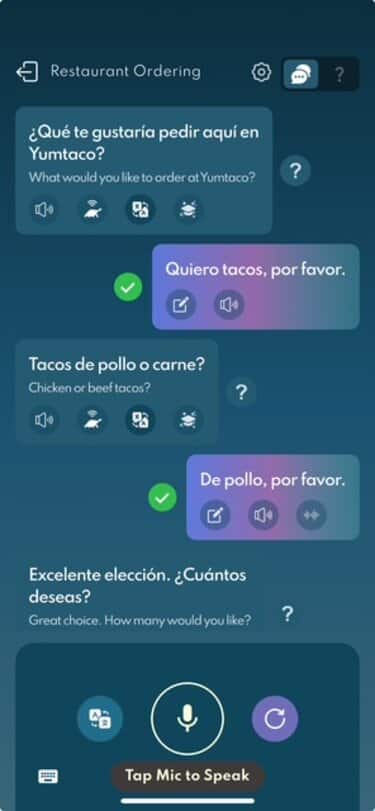
You can pick a topic—like negotiating a raise or discussing health concerns—and the AI will walk you through the conversation step by step. There’s even an option to create custom situations, such as getting directions from a local or receiving advice from an aunt. What really makes this feature shine is the real-time feedback on pronunciation, grammar, and phrasing. While the AI suggests responses to keep things flowing, you have the freedom to answer however you want, making the experience feel more organic and personalized.
Overall, we think the AI tutor is a fantastic tool for practicing real conversations in a low-pressure setting. It helps build confidence and fluency by giving learners a chance to speak freely while receiving helpful, on-the-spot corrections.
Verdict: Jumpspeak or Pimsleur?
When comparing Pimsleur and Jumpspeak, both have their strengths, but Pimsleur ultimately comes out ahead as the more complete language learning program.
Jumpspeak brings some cool features to the table, like its AI tutor and video explainers, but a few shortcomings hold it back.
Pimsleur, on the other hand, offers a more well-rounded experience with in-depth audio lessons, a mix of reinforcement exercises, and top-notch speech recognition. Its user-friendly platform and time-tested teaching method make it a solid choice for serious learners.
If you’re looking for a structured, proven way to build real conversational skills, Pimsleur is the better bet.
Pimsleur focuses on structured, audio-driven lessons that emphasize listening comprehension and spoken practice through a proven, step-by-step method. In contrast, Jumpspeak uses AI-powered conversation simulations and bite-sized lessons to create a more interactive, fast-paced learning experience.
It depends on your learning style—Jumpspeak is great for quick, AI-driven conversation practice, while Pimsleur offers a more structured approach with in-depth audio lessons. If you want a proven, immersive method for building strong listening and speaking skills, Pimsleur is the better choice.



